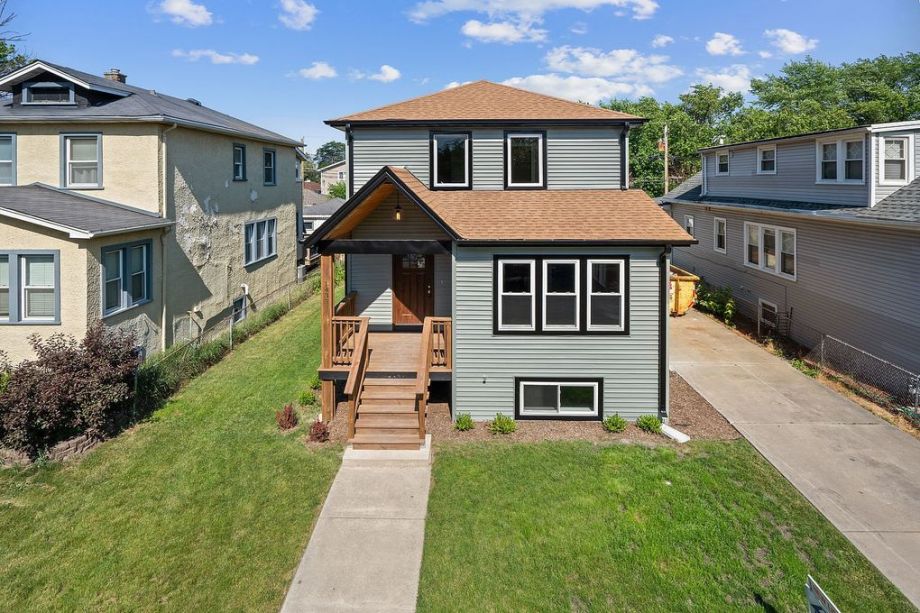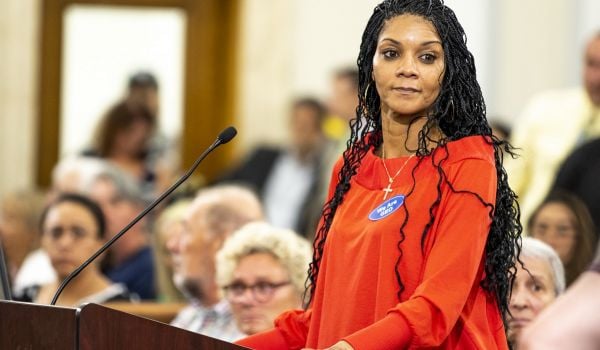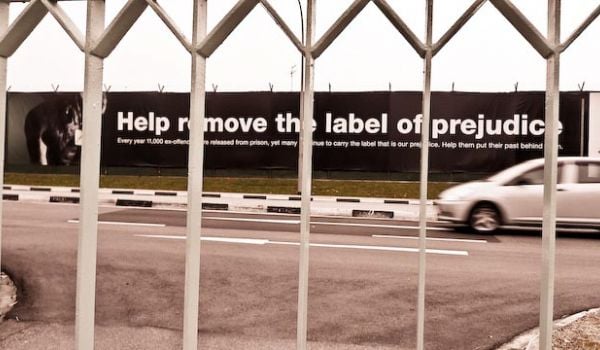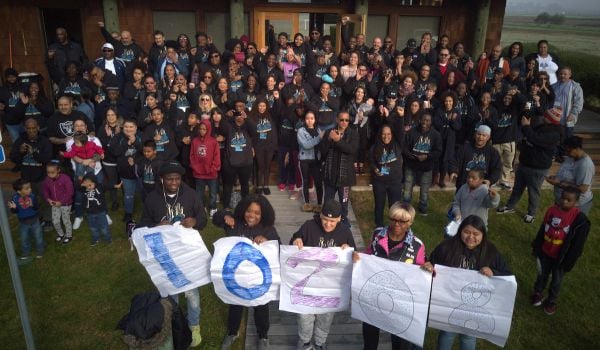Marquis Mckenzie knows how difficult it can be for people leaving prison to find a good place to live. As a formerly incarcerated individual, Mckenzie sees a large need where he lives in Florida for halfway housing that is driven less by profit and more by compassion.
“It’s not a good model. It seems like it’s almost like a business competition,” he says. “[Halfway housing] is needed and a lot of people recognize that, and they use it at their advantage to basically enhance their business, but not enhance the lives of the individuals that are coming through those doors.”
Florida is not unique. Across the U.S., halfway housing for returning citizens is owned and operated by a patchwork of providers — nonprofits, religious organizations, state and county governments. But a growing number are also run by some of the largest prison companies in the country. This trend has created competing goals for reentry services, a clash between whether to focus on people or money, and mixed results.
Most halfway houses get the majority of their funding from philanthropic sources rather than a federal or state contract, says Reuben Jonathan Miller, a University of Chicago professor who studies the lives of incarcerated and formerly incarcerated people. But there aren’t enough nonprofits to meet the need for housing.
“On the one hand, there are these big operators that are getting massive federal contracts,” Miller says. “On the other, probably as large a share, are a bunch of mom-and-pop shops that open because people have a vision of what needs to happen.”
At least 90% of prisons are public rather than private, he says. GEO Group and CoreCivic, two of the biggest prison companies, run a lot of those remaining 7-10% of institutions.
As private prisons have come under more political scrutiny, GEO and CoreCivic have diversified their services. CoreCivic had only two halfway houses in 2014, but operated 29 just six years later, according to the Marshall Project. GEO more than tripled its number of facilities over the past decade or so.
Almost 2 million people are incarcerated, but more than 4 million are on probation or parole. Those are enticing numbers for prison companies, Miller says.
“The market share is twice the size,” he says. “It makes sense because it’s the next phase of incarceration.”
Residents of GEO and CoreCivic halfway houses have reported conditions not too different from prison and COVID-19 outbreaks. As Miller says, it’s not quite freedom. People live in prison-like conditions under lock and key.
Problems with halfway houses are not contained to GEO and CoreCivic. For example, Volunteers of America runs halfway houses that have been accused of not following COVID-19 social distancing protocols. But prison companies also receive criticisms that they focus on profits more than on helping people reenter outside society. (GEO and CoreCivic are both publicly traded companies.)
Miller says a nonprofit might follow missions around caring for people, while the large companies that get federal contracts have a mindset of security.
“They might offer some rehabilitative programming, but the goal of a federally funded reentry center is to keep the community safe,” he says. “It’s making sure doors are locked, making sure people don’t get out, making sure people don’t reoffend whereas the smaller group might have a different motivation altogether.”
Miller says halfway houses are a necessity because of the state of the housing landscape for formerly incarcerated people. Most people in prison come home after an average length of 2.4 years and they need somewhere to live, he says. More than 1,000 housing restrictions create hurdles for people with criminal records. Landlords often deny applications from people with felony records. Public housing bars residents and even guests with criminal records.
This landscape coupled with the rising proportion of halfway houses owned by GEO and CoreCivic has created a need for more ethical alternatives.
Mckenzie is starting his own halfway house in Orlando that will house up to six people. He is the organizing manager at the Florida Rights Restoration Coalition, which is run by formerly incarcerated people.
Right now, the house is going through a trial run with two residents. While many halfway houses in Florida charge their residents $600-800 a month for rent, his house will be free.
He says not everyone leaving prison has family support, which makes it especially crucial to receive help. Residents will have paid jobs at Mckenzie’s cleaning business, resources to attend school and access to mentoring by formerly incarcerated people.
His program runs on personal funds and resources from his cleaning business.
Efforts to reform the halfway house model are also underway outside of Florida. In Illinois, Bethany Little founded WIN Recovery in 2019. The program provides housing to formerly incarcerated LGBTQ+ people, especially women. People first start in a house and then move to independent living after nine months to a year. WIN Recovery secured a deal with Illinois and Cook and Champaign counties that gives program participants a housing voucher.
Champaign County also waives the usual requirement for a criminal background check to live in public housing, Little says.
WIN Recovery has two locations that serve a total of 11 people. Four more locations are in development as the organization waits on a grant from the Illinois Housing Development Authority.
“What Illinois has done is realized that it has to have a program attached to it,” says Little, CEO of WIN Recovery. “It can’t just be, ‘Here’s a place to stay. You got to get a job in 30 days and have to pay this money and then you’re good to go in a few months.’”
She says Illinois realizes that formerly incarcerated people need guidance, programming and resources to succeed after they leave a halfway house.
WIN Recovery receives funding from an Illinois state contract. Many organizations that collaborate with the government must navigate competing goals for reentry. Little says she has developed a close relationship with the state government. She even visited the governor’s mansion at one point to talk with the governor’s wife.
WIN Recovery calls itself a single-family safe home, not a halfway house. Little says that’s because zoning laws in many localities — in Illinois and nationally — severely restrict where halfway houses can operate.
“We shouldn’t be stigmatized because we have people that have [criminal] backgrounds in our home,” she says. “You wouldn’t know that about Jane next door.”
She adds that a good halfway house serves each person as an individual.
Miller says beyond fulfilling basic human needs, halfway houses should offer job placement, substance abuse treatment, counseling and even job and housing brokers. Some programs, like A New Way of Life in California, do family reunification.
“Incarceration is an emotionally taxing, perhaps traumatizing experience for most people. So people need help to transition from incarceration to the broader society, especially in light of this policy terrain,” he says. “Does what’s being offered match the need? I’m not sure of that. In fact, in many cases, I think it doesn’t at all. But there is a need for some sort of transitional housing to help people.”
This article is part of Backyard, a newsletter exploring scalable solutions to make housing fairer, more affordable and more environmentally sustainable. Subscribe to our weekly Backyard newsletter.

Adina Solomon is a freelance journalist based in Atlanta. She writes on a range of topics with specialties in city design, business and death. Her work has appeared in The Washington Post, CityLab, U.S. News & World Report, and other national and local outlets.






_600_350_80_s_c1.jpeg)







